Brief History of State Funding
| Copyright Dominique Clément / Clément Consulting
The sixties remain synonymous with mobilization, volunteerism and activism especially in North America and Western Europe. As Catherine Corrigall-Brown notes in Patterns of Protest (2011), 65 per cent of the 1965 cohort of American high school students would eventually participate in a protest event or belong to a voluntary organization.
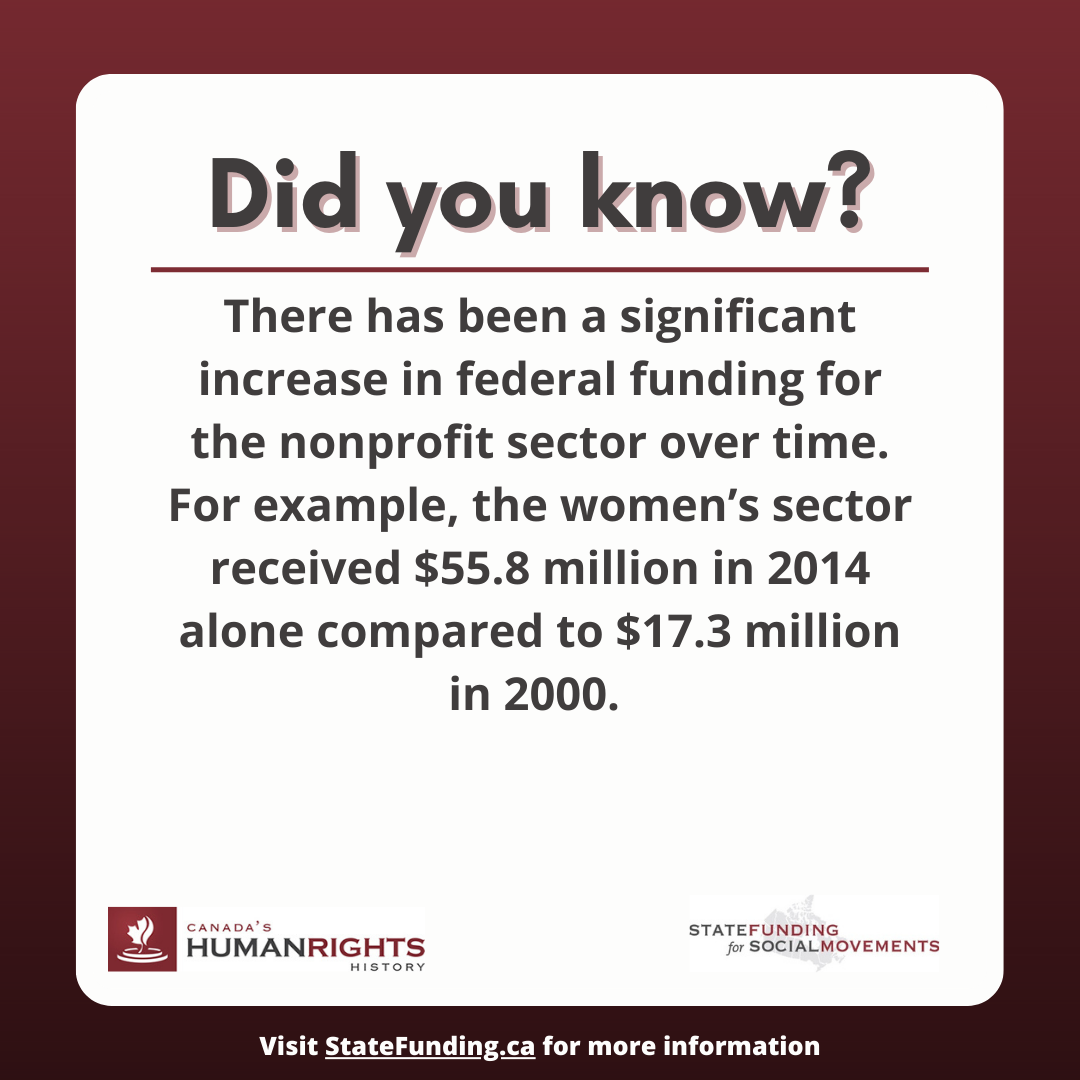 It was unusual for governments in Canada to provide funding to NGOs (non-governmental organizations) before the 1960s. The federal government only occasionally provided small grants for immigrant resettlement or funding for charitable service programs such as the Victorian Order of Nurses and the Canadian Lung Association. Similarly, in British Columbia, the only organizations to receive annual government grants by the 1960s included Boys and Girls Clubs, Young Men/Women Christian Associations, Salvation Army and a handful of other charitable service organizations. Grants were offered on an ad hoc basis each year and were never intended to fully fund any organization. Governments expected that private sector agencies, particularly the United Way or Community Chest, would be their primary source of revenue. There were often no guidelines or formal procedures. Most groups would simply send a letter or a brief proposal to a minister. Funding was contingent upon legislative approval for ministerial budgets and could vary each year. Governments rarely funded organizations whose primary mandate was advocacy.
It was unusual for governments in Canada to provide funding to NGOs (non-governmental organizations) before the 1960s. The federal government only occasionally provided small grants for immigrant resettlement or funding for charitable service programs such as the Victorian Order of Nurses and the Canadian Lung Association. Similarly, in British Columbia, the only organizations to receive annual government grants by the 1960s included Boys and Girls Clubs, Young Men/Women Christian Associations, Salvation Army and a handful of other charitable service organizations. Grants were offered on an ad hoc basis each year and were never intended to fully fund any organization. Governments expected that private sector agencies, particularly the United Way or Community Chest, would be their primary source of revenue. There were often no guidelines or formal procedures. Most groups would simply send a letter or a brief proposal to a minister. Funding was contingent upon legislative approval for ministerial budgets and could vary each year. Governments rarely funded organizations whose primary mandate was advocacy.
There was a profound shift in the relationship between NGOs and governments in Canada beginning in the 1960s. The shift was due, in part, to the emerging welfare state that was placing enormous demands on governments to provide new services. NGOs become an ideal low-cost option for delivering many of these services. At the same time, the Liberal Party, which formed the federal government for most of the period from 1968 to 1984, was elected on a platform of social justice and participatory democracy. These developments, as well as concerns about a burgeoning separatist movement in the province of Quebec, prompted federal, provincial and municipal governments to become more active in the non-profit sector.
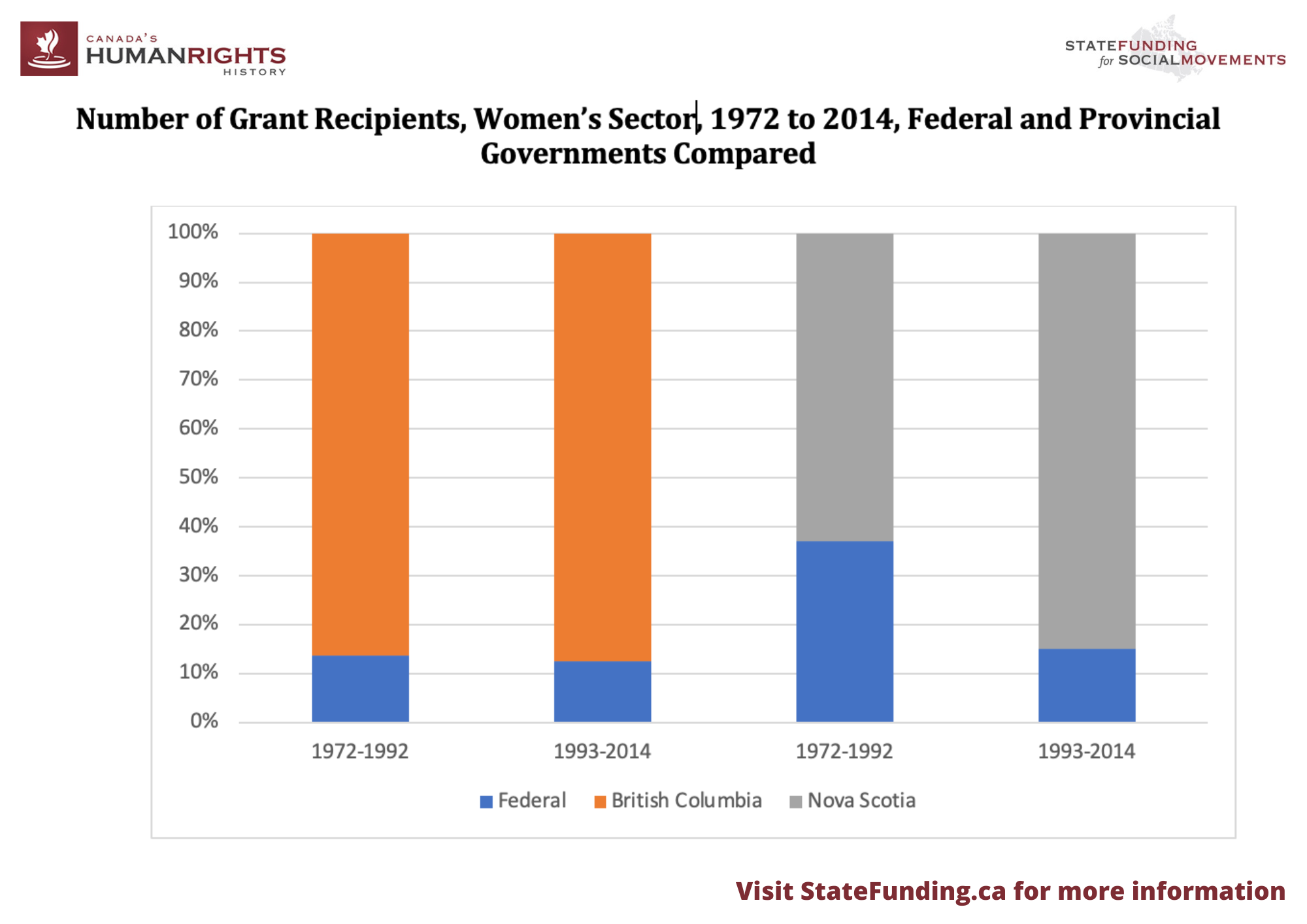
There were also important policy developments that encouraged governments to foster greater engagement with organizations in the environment, human rights, Indigenous peoples and women’s sectors among others. To celebrate International Year for Human Rights in 1968, for instance, the federal government provided funding in every province with the express purpose of supporting the creation of human rights organizations. More than a dozen organizations were formed, many of which became prominent in local and national advocacy for rights. The 1969 White Paper, which proposed eliminating Indian status, stimulated an unprecedented level of mobilization among Indigenous peoples in opposition. Among the legacies of the White Paper was a renewed Indigenous rights movement. Similarly, the Royal Commission on the Status of Women (1971) raised the profile of women’s issues in Canada. Thousands organized to participate in the commission’s hearings and, in the wake of its final report, dozens of status of women’s groups emerged across the country. There was also evidence of renewed interest in developing policy for the environmental sector. Two years before Greenpeace was founded in Vancouver, the federal government introduced landmark legislation including the Clean Air Act and the Canada Water Act.
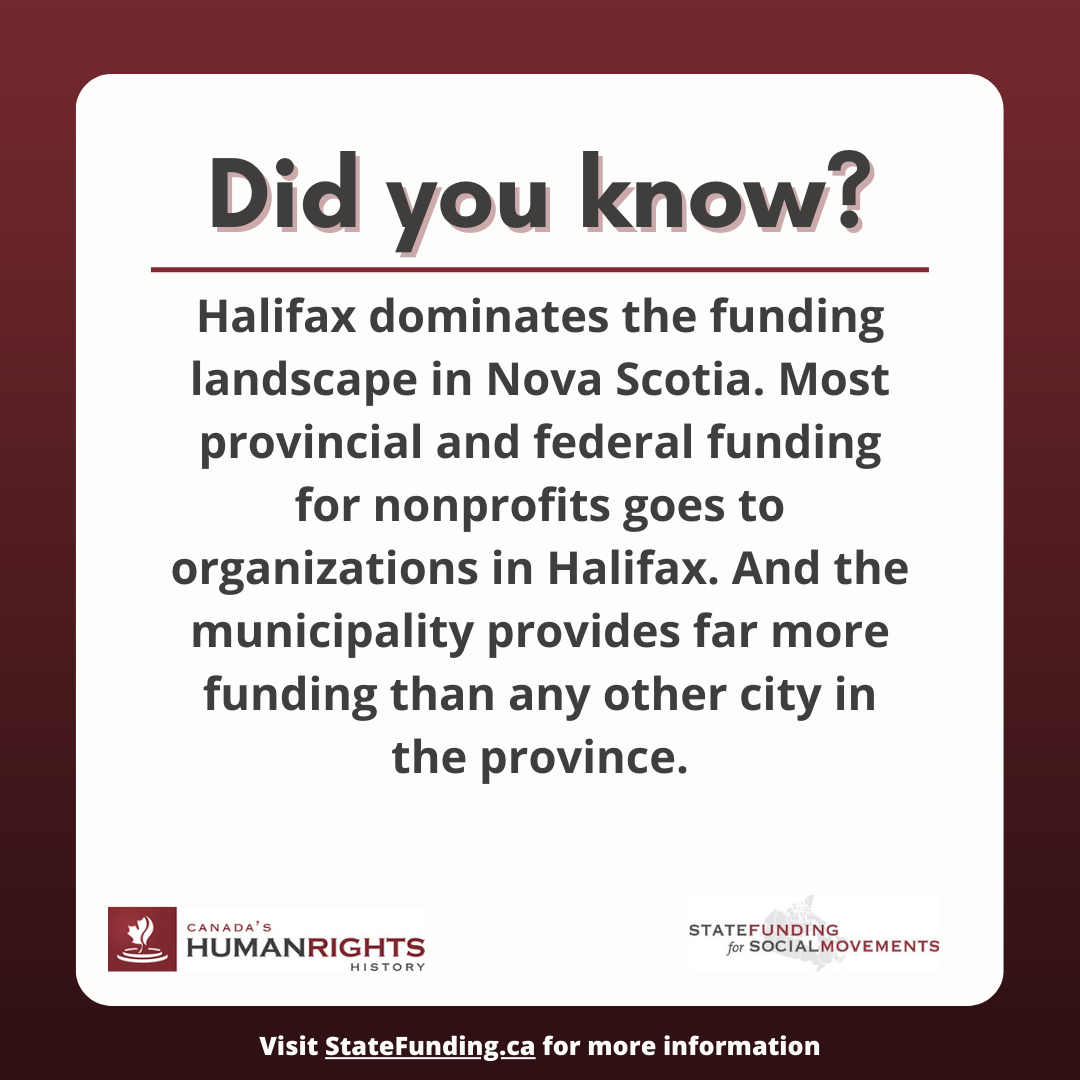 In many cases, new funding programs were designed to pay NGOs to deliver public services. It was during this period, for instance, when provincial governments began funding rape crisis centres and transition homes. Within a few years, the federal government had established programs for Indigenous peoples, human rights, multiculturalism, official languages and women’s equality among many others. Grants under the Secretary of State’s citizenship program alone increased from $4.9 million in 1970 to $43 million in 1975 and $162.7 million in 1985. As Leslie Pal has noted in Interests of State (1993), there were also several programs designed to counter French Canadian nationalism. By funding NGOs, such as minority language rights organizations, the federal government sought to encourage citizen participation in national debates and institutions. Similarly, federal ministries such as Indian Affairs and Northern Development, Employment and Immigration or National Health and Welfare established funding programs that provided grants to Indigenous peoples organizations, women’s groups and voluntary health associations among others. Municipalities also distributed annual grants (or tax exemptions) for services or cultural events.
In many cases, new funding programs were designed to pay NGOs to deliver public services. It was during this period, for instance, when provincial governments began funding rape crisis centres and transition homes. Within a few years, the federal government had established programs for Indigenous peoples, human rights, multiculturalism, official languages and women’s equality among many others. Grants under the Secretary of State’s citizenship program alone increased from $4.9 million in 1970 to $43 million in 1975 and $162.7 million in 1985. As Leslie Pal has noted in Interests of State (1993), there were also several programs designed to counter French Canadian nationalism. By funding NGOs, such as minority language rights organizations, the federal government sought to encourage citizen participation in national debates and institutions. Similarly, federal ministries such as Indian Affairs and Northern Development, Employment and Immigration or National Health and Welfare established funding programs that provided grants to Indigenous peoples organizations, women’s groups and voluntary health associations among others. Municipalities also distributed annual grants (or tax exemptions) for services or cultural events.
In this way, the relationship between the state and the nonprofit sector had fundamentally changed by the 1980s.
There is, however, a dearth of historical research on state funding for the voluntary sector. As a result, there is a common narrative in the scholarship on this topic. According to this narrative, for most of the nineteenth and twentieth centuries public funding was scarce and limited to charitable organizations. Beginning in the 1960s, however, there was a surge of public funding for the voluntary sector. Most of the funding came from the federal government and, in particular, the Ministry of the Secretary of State, which was the most visible source of public funding (especially for advocacy). A defining feature of this shift in the state’s relationship with civil society organizations was that the government provided operational (core) funding to advocacy organizations that were openly critical of the state. There were few restrictions placed on grant recipients. This contributed to the proliferation of NGOs across Canada in the 1960s and 1970s. In the 1980s, though, federal funding was reduced or restricted to projects that often required additional matching funds. Several NGOs that had become dependant on public funding struggled to survive. Many notable organizations, such as the National Action Committee on the Status of Women, were soon defunct. Despite a brief effort by the federal government to reengage the voluntary sector in the 1990s, funding has continued to decline or shifted towards supporting the provision of services rather than advocacy. The exception to this trend was Quebec. As Dominique Masson and others have demonstrated, public funding has increased in Quebec over time and has become integral to the province’s political culture.
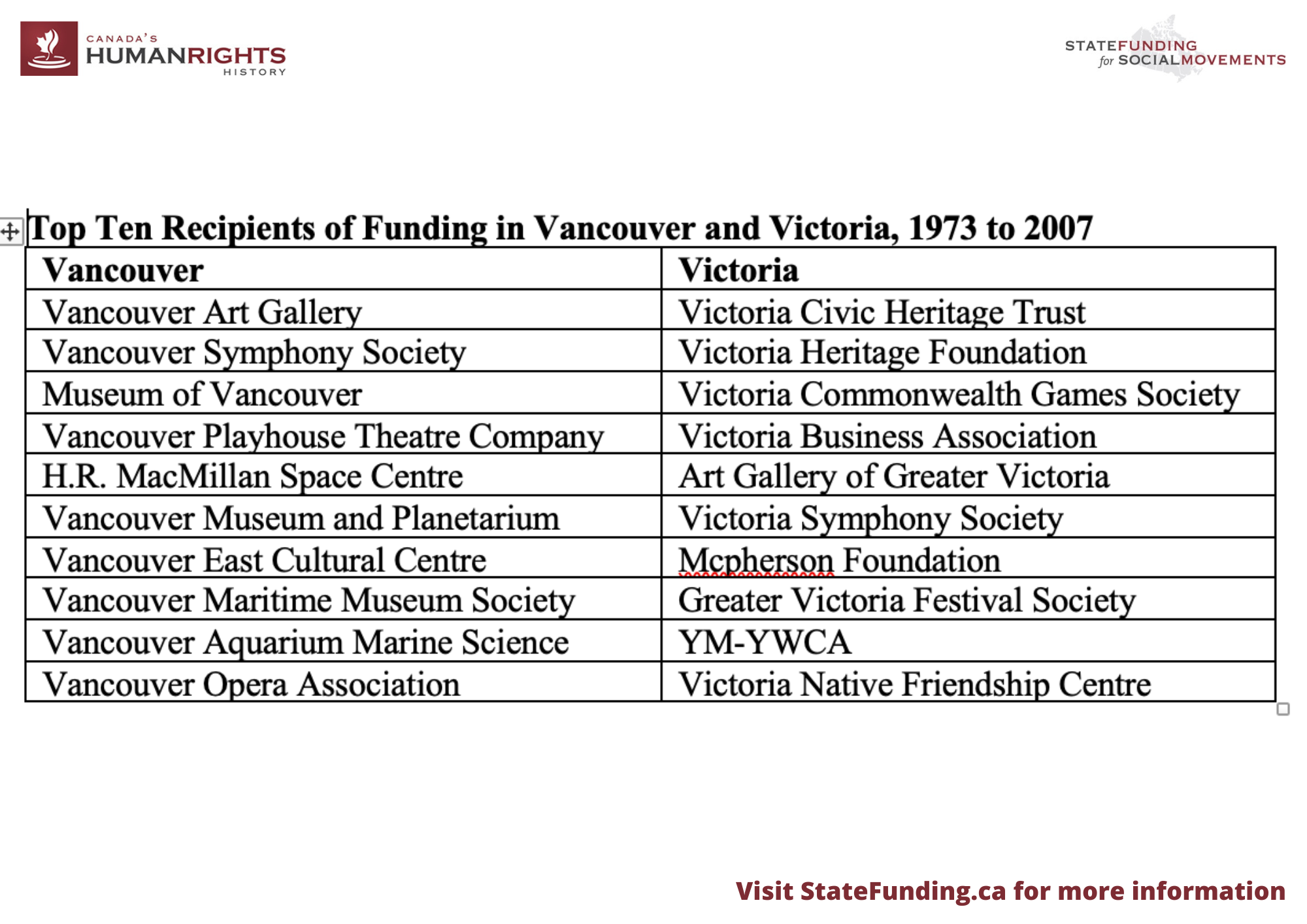
Our research challenged many aspects of this common narrative. One the primary findings of this project is that funding for nonprofit organizations increased dramatically beginning in the 1970s rather than the 1960s. Funding was initially available for a diverse array of NGOs, including political advocacy. In this way, governments contributed to fostering the proliferation of NGOs across Canada in the 1970s and 1980s. Since the 1990s, however, governments have concentrated funding among a small number of established organizations that provide public services rather than engaging in advocacy. In other words, rather than an overall decrease in funding, the state has favoured certain segments of the nonprofit sector over time. This trend has exacerbated in recent years. To explore these and other findings, please see the publications arising from this project in the deliverables section.
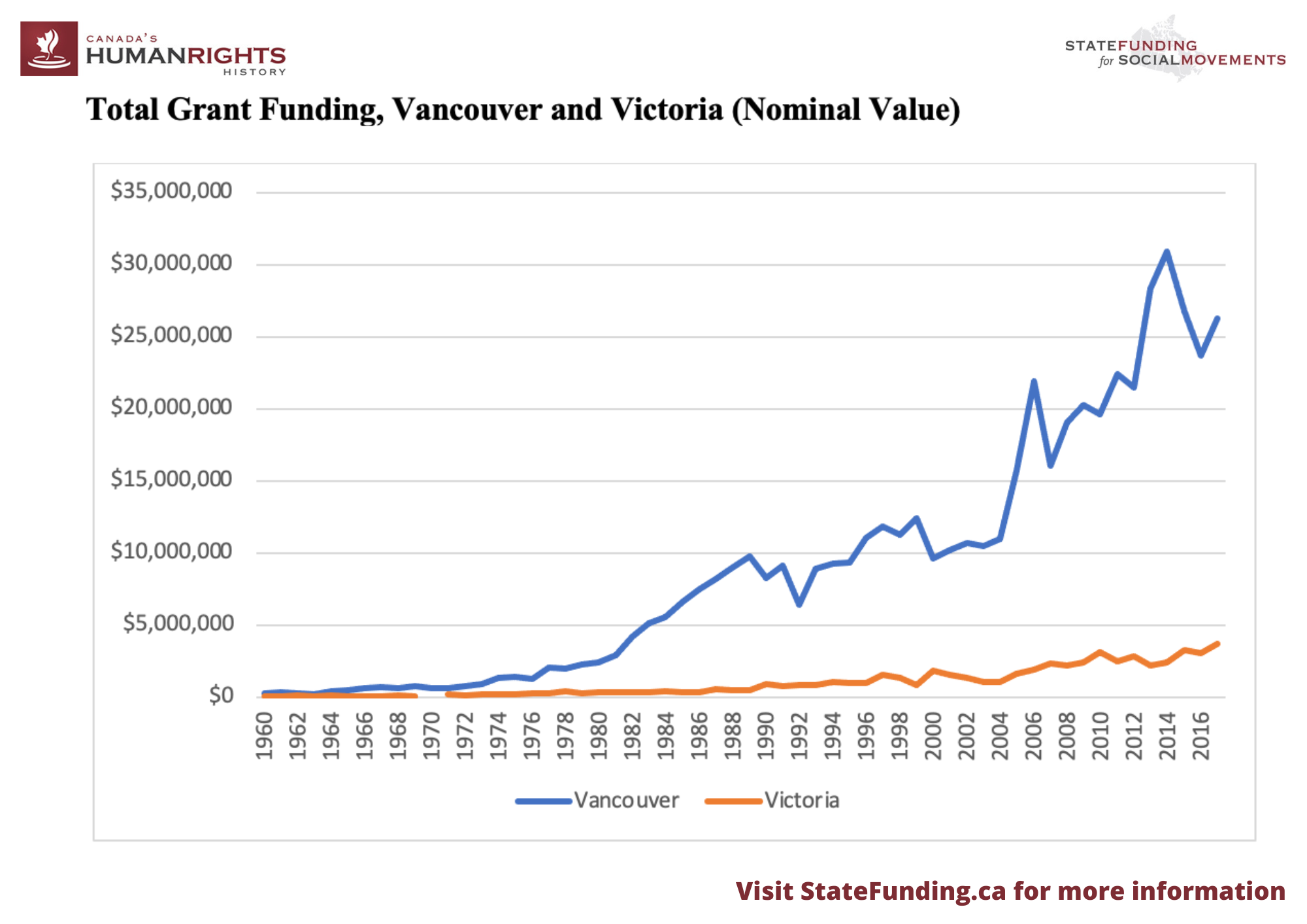

Readings lists on the topic of state funding for social movements
All information sources from statefunding.ca and the database should be acknowledged by the User and cited as follows:
–
Website:
- Clément, Dominique. “Title of Page or Document.” State Funding for Social Movements. Accessed [date accessed, e.g. 28 July 2020] www.statefunding.ca.
- –
Database:
Clément, Dominique. State Funding for Social Movements Database. Accessed [date accessed, e.g. 28 July 2020] database.statefunding.ca



 © 2024 COPYRIGHT CLÉMENT CONSULTING. ALL RIGHTS RESERVED.
DEPARTMENT OF SOCIOLOGY, UNIVERSITY OF ALBERTA
© 2024 COPYRIGHT CLÉMENT CONSULTING. ALL RIGHTS RESERVED.
DEPARTMENT OF SOCIOLOGY, UNIVERSITY OF ALBERTA